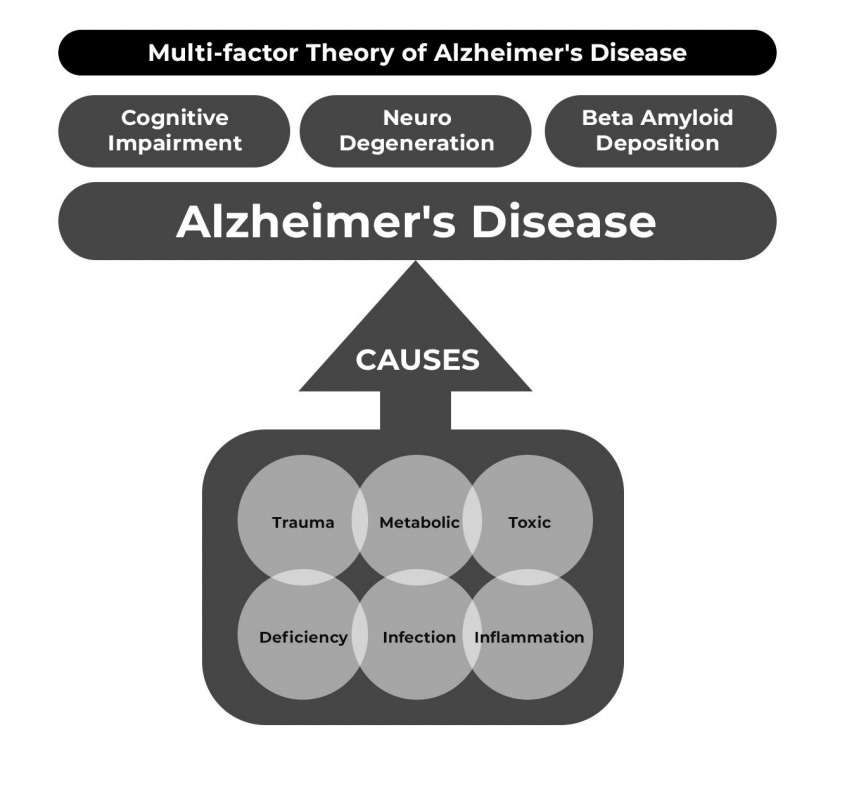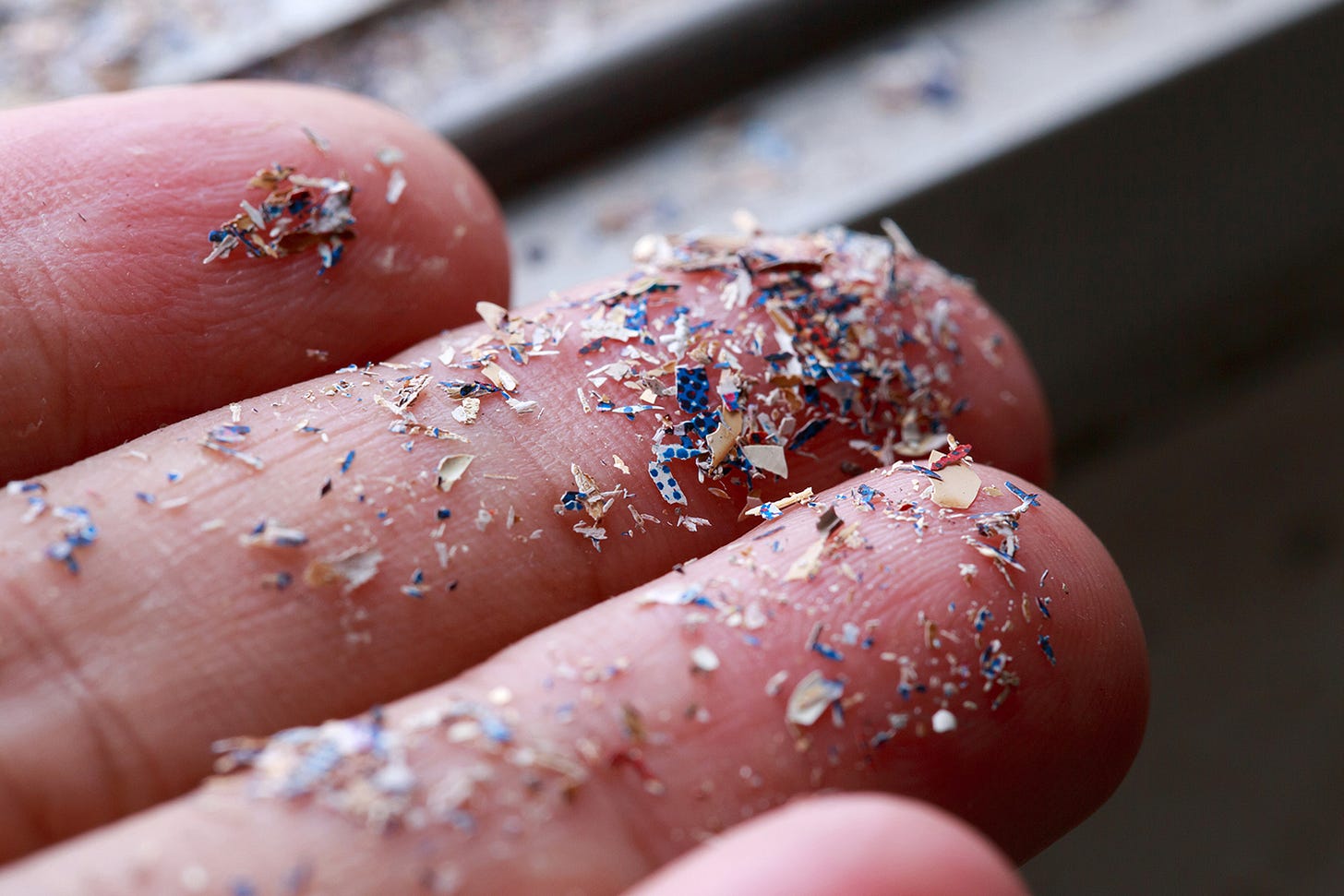Microplastics and Cognitive Decline: The Hidden Root Cause Your Brain Health Program Must Address
Will you be the only doctor in your town ready to solve this problem?
If you’re a precision medicine or functional medicine doctor, you already know that cognitive decline isn’t just an inevitable part of aging—it’s a multifactorial, root-cause-driven condition that demands a systems biology approach.
You’re tracking metabolic inflammation, optimizing nutrient and mitochondrial health, balancing hormones and trophic factors, and addressing gut-brain biotoxins. But one major category of root causes is still flying under the radar in the cognitive decline conversation:
Chemical Toxins—Specifically, Microplastics.
The science on microplastics and their neurotoxic effects is rapidly emerging, and just like how heavy metals were once dismissed but are now widely accepted as key drivers of neurodegeneration, microplastics are the next frontier in environmental neurotoxicity.
For functional and precision medicine doctors looking to differentiate their brain health program, addressing microplastics can be a huge opportunity to lead the conversation before it becomes mainstream.
The Rising Threat of Microplastics in Brain Health
What Are Microplastics & Nanoplastics?
Microplastics are tiny plastic particles (<5mm in size) found in everything from our food and water to our bodies. Nanoplastics are even smaller—measuring in nanometers, small enough to breach the blood-brain barrier and accumulate in neural tissue.
Studies have found microplastics in 100% of human blood samples tested.
Brain autopsies of Alzheimer’s patients have shown plastic particles embedded in brain tissue.
Humans consume an average of 5 grams of plastic per week (the weight of a credit card).
We’ve spent decades discussing inflammation, gut health, and detox pathways—but how much plastic is lodged in your patient’s brain, disrupting neural function?
How Microplastics Drive Cognitive Decline
According to emerging research, microplastics contribute to neurodegeneration in three major ways:
1. Microplastics Are Neurotoxic
Nanoplastics can penetrate the blood-brain barrier, triggering oxidative stress, synaptic dysfunction, and neuroinflammation.
Studies in animals show cognitive dysfunction and memory loss when exposed to microplastics over time.
They bind to heavy metals and endocrine disruptors, amplifying their neurotoxic effects.
2. Microplastics Disrupt Mitochondria & Cellular Energy
These particles interfere with ATP production, directly impacting neuronal energy metabolism.
They impair synaptic function, leading to slower cognition, brain fog, and executive dysfunction.
3. Microplastics Trigger Chronic Inflammation
The immune system sees microplastics as a foreign invader, setting off a chronic inflammatory response.
Microplastics accumulate in the gut, contributing to dysbiosis and leaky gut, leading to systemic inflammation and gut-brain axis dysfunction.
As functional medicine doctors, we’re already looking at chronic inflammation and environmental toxicants—but how many of us are systematically assessing plastic toxicity in our cognitive decline patients?
How Microplastics Enter the Body (And What to Tell Your Patients to Avoid)
At the Reversing Alzheimer’s Summit in May, Dr. Miles Nichols will be presenting new research on microplastics and neurodegeneration, including the three primary ways these plastics enter the body:
1. Contaminated Water (The #1 Culprit)
94% of U.S. tap water contains microplastics.
Bottled water contains nearly double the plastic particles of tap water.
Plastic + Heat, Acid, or Fermentation = Increased Leaching.
Major patient exposures include:
Plastic water bottles left in the sun or a hot car.
Coffee cups lined with plastic (all paper cups have plastic linings).
Fermented drinks in plastic (kombucha, vinegar, etc.).
Acidic drinks like soda, fruit juice, and sports drinks stored in plastic.
Clinical Strategy:
Educate patients to switch to glass or stainless steel.
Encourage the use of high-quality water filters (reverse osmosis or activated carbon) in their homes.
2. Food Packaging & Processing
Heating food in plastic (Tupperware, takeout containers, microwavable bags) releases microplastics into food.
Plastic wrap and packaging increase exposure, especially when touching fatty or acidic foods.
Seafood, processed foods, and even produce have been found to contain plastic.
Clinical Strategy:
Advise patients to avoid heating food in plastic—use glass or stainless steel instead.
Recommend they prioritize fresh, whole foods over processed, plastic-packaged alternatives.
3. Airborne Inhalation
Microplastics are in household dust and indoor air, mainly from synthetic clothing, carpets, and upholstery.
We inhale thousands of plastic fibers per day.
Clinical Strategy:
Encourage the use of HEPA air filters at home.
Suggest patients use microplastic-filtering laundry bags when washing synthetic clothes.
Recommend they vacuum regularly with a HEPA-filtered vacuum to reduce indoor plastic exposure.
How to Integrate Microplastics Testing into Your Brain Health Program
The biggest challenge in integrative and precision psychiatry is that no conventional neurologist is testing for microplastics.
This is a huge opportunity for functional medicine doctors to differentiate their approach—because if microplastics are accelerating cognitive decline in your patients, you want to know before irreversible damage occurs.
Step 1: Assess Chemical Toxic Load
Run urine and blood panels to measure BPA, phthalates, dioxins, and microplastic-related markers.
Use functional genomics to assess detox pathway efficiency—patients with poor methylation and glutathione production may be at higher risk.
Step 2: Educate & Implement Lifestyle Detox Strategies
Support biotransformation pathways with:
Glutathione precursors (NAC, alpha-lipoic acid)
Sulforaphane (broccoli sprouts)
Fiber-based binders (psyllium husk, activated charcoal, chlorella)
Promote sauna therapy and regular sweating to increase elimination of stored plastics.
Step 3: Position Your Clinic as the Go-To Brain Health Authority
Most neurologists and primary care doctors aren’t addressing microplastics—be the leader in precision brain detox.
Create an educational campaign around microplastics (email sequences, patient workshops, social media).
Offer a root-cause-driven brain health membership that includes chemical toxin testing and interventions.
Lead the Next Evolution in Brain Health
Think back to heavy metals—10 years ago, mainstream medicine wasn’t talking about mercury and aluminum in neurodegeneration. Now, it’s widely accepted.
Microplastics are the next major toxic threat in brain health. The question is: will your clinic be ahead of the curve—or playing catch-up when conventional medicine finally wakes up?
At TruNeura, we integrate chemical toxin tracking into brain health optimization, making it easy for practitioners to assess, track, and intervene on microplastic-driven inflammation and neurotoxicity.
If you want to stand out as a leader in cognitive health and precision medicine, now is the time to start talking about microplastics with your patients.
Your patients’ long-term brain health—and your practice’s future—depends on it.




Huh. I thought I was just getting dumber
A very important topic, and well covered. It's hard to imagine a world without plastics... and yet they've been with us for less than a century.